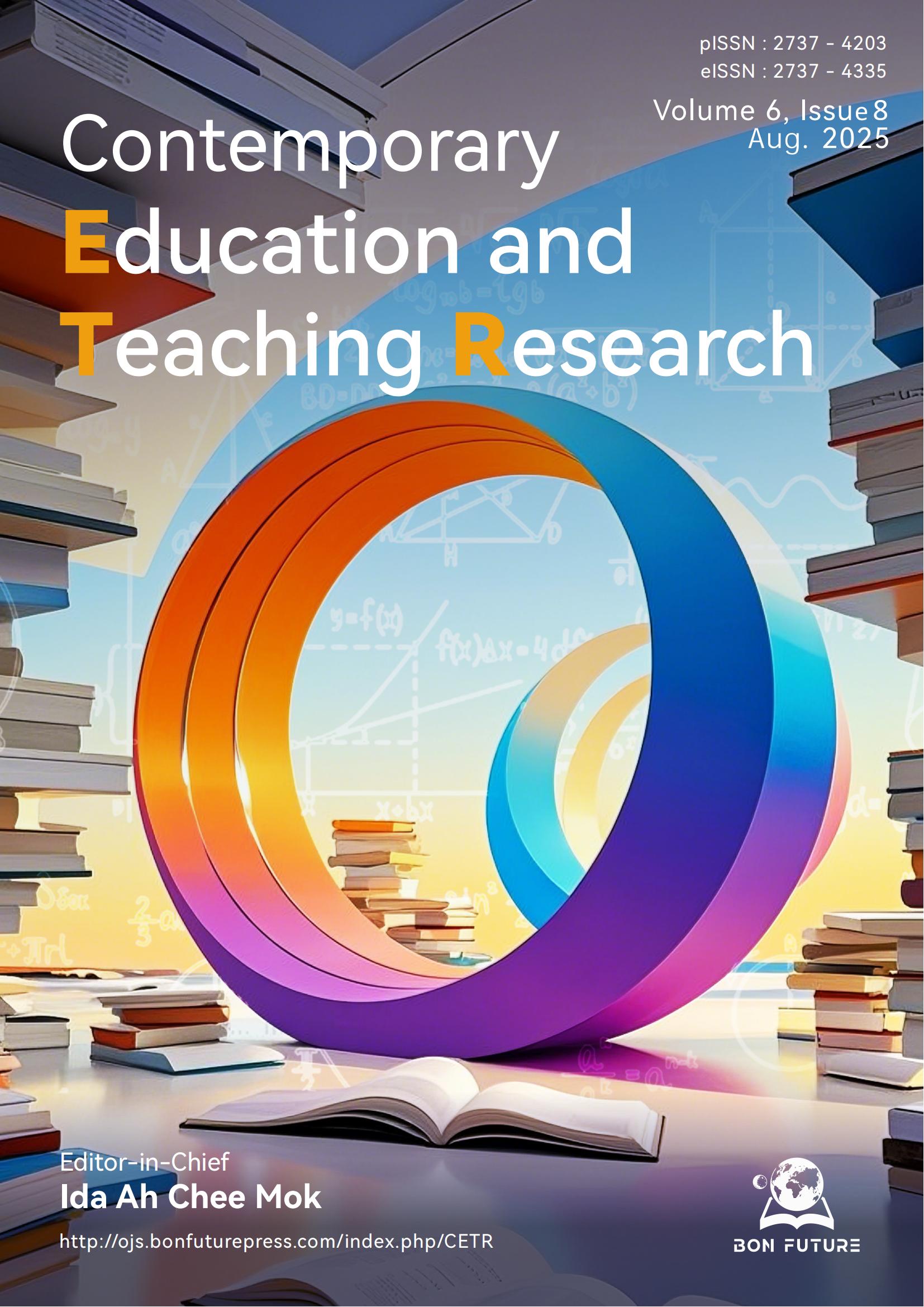Multi-Dimensional Coupling Mechanism between University Governance System and Students’ Social-Emotional Evolution under the Dynamic Emotional Perspective
DOI:
https://doi.org/10.61360/BoniCETR252018670802Keywords:
sociology of emotions, higher education governance, socio-emotional competence, coupling mechanismAbstract
In the process of modernizing higher education, the dynamic evolution of students’ socio-emotional competence and the multidimensional interaction of the higher education governance system constitute the core mechanisms affecting educational quality. Drawing on the intersection of the sociology of emotions and governance theory, this paper integrates interactive ritual chain theory and governance network theory to construct a coupled “emotion-governance” analytical framework. Through a mixed-methods study of a typical university, the paper reveals how SECs develop through the mechanism of affective dynamics, driven by institutional rules, organizational culture, and technological intermediaries. The paper finds that governance rule density and SEC growth have an inverted U-shaped relationship: rigid institutions enhance the sense of control and promote goal management ability before the critical value, but overloaded rules trigger emotional dissipation, leading to a decline in responsible decision-making ability. Meanwhile, the emotional connection between teachers and students empowers the development of SECs via a dual transmission path: emotional support directly strengthens relational skills and indirectly enhances self-management ability through academic efficacy. Finally, the algorithmic recommendation system generates the “emotional bubble effect”, and the collaborative filtering platform increases homogeneity in students’ social circles, significantly inhibiting the development of social awareness. This paper indicatively proposes an “Adaptive Emotional Governance Network” model consisting of a participatory decision-making module, a cultural immersion system and a digital twin laboratory functioning as an emotional adjustment centre. This model has been empirically verified to increase the growth rate of SECs in conflict situations.
References
Ansell, C., & Gash, A. (2008). Collaborative governance in theory and practice. Journal of Public Administration Research and Theory, 18(4), 543–571.
Archer, L. (2013). Social and emotional capital: A review of concepts, evidence and policy. Department for Education.
Ball, S. J. (2021). The education debate. Policy Press.
Becher, T., & Trowler, P. R. (2001). Academic tribes and territories: Intellectual enquiry and the culture of disciplines. Open University Press.
Bowles, S., & Gintis, H. (1976). Schooling in capitalist America: Educational reform and the contradictions of economic life. Basic Books.
Castells, M. (2001). The Internet galaxy: Reflections on the Internet, business, and society. Oxford University Press.
William L. (2010). The academic life: Small worlds, different worlds. London Review of Education, 8(3), 251–261.
Cohen, M. D., & March, J. G. (1974). Leadership and ambiguity: The American college president. McGraw-Hill.
Collins, R. (2004). Interaction ritual chains. Princeton University Press.
Collins, R. (1991). Interaction ritual chains. Polity Press.
Bowen, L. J. (2014). Emotion in organizations. Journal of Management Education, 38(1), 114–142.
Foucault, M. (1977). Discipline and punish: The birth of the prison. Vintage Books.
Tian, G., Yang, Y., Zhang, X., et al. (2025). From defensive reasoning to innovation: How digital tools foster positive emotions in organizations. BMC Psychology, 13(1), 146.
Goffman, E. (1983). The presentation of self in everyday life. University of California Press.
Duignan, A. P. (2001). The managed heart. Improving Schools, 4(3), 33–39.
Kezar, A. (2014). Rethinking leadership in higher education: Confronting the complexity of leading colleges and universities. Jossey-Bass.
Negro, G., et al. (2017). Emotion networks in organizational decision making. Administrative Science Quarterly, 62(1), 3–38.
Ostrom, E. (1990). Governing the commons: The evolution of institutions for collective action. Cambridge University Press.
Isaac, C. J. (2010). Beyond the tragedy of the commons: A discussion of Governing the Commons: The Evolution of Institutions for Collective Action. Perspectives on Politics, 8(2), 569–569.
Putnam, R. D. (1971). Making democracy work: Civic traditions in modern Italy. Harvard University Press.
Smith, K. (2018). Emotional labor in higher education administration. Higher Education, 75(3), 457–473.
Turner, J. H. (2000). On the origins of human emotions: A sociological study of the naturalistic approach. Stanford University Press.
Paige H . (2013). Women, Sex, and the Church: A Case for Catholic Teaching ed. by Erika Bachiochi.The Thomist: A Speculative Quarterly Review, 77(2), 314-319.
Morin, F. J., & Couette, C. (2025). The missing ingredients for a polycentric governance system of orbital debris. Global Environmental Politics, 25(2), 1–26.
Madahian, S., Tavakoli, M. A., Salajegheh, S., et al. (2017). Developing a model of proper governance for removing interaction barriers between universities of medical sciences and industries. Journal of Health Sciences and Surveillance System, 5(1), 22–31.
Environmental Water Research. (2020). Study results from East China Normal University provide new insights into environmental water research (The Ocean’s Ultimate Trashcan: Hadal Trenches as Major Depositories for Plastic Pollution). Ecology Environment & Conservation.
Zabarankin, M. (2008). The framework of k-harmonically analytic functions for three-dimensional Stokes flow problems, part I. SIAM Journal on Applied Mathematics, 69(3), 845–880.
Published
Issue
Section
License
Copyright (c) 2025 Jin Lu

This work is licensed under a Creative Commons Attribution 4.0 International License.





